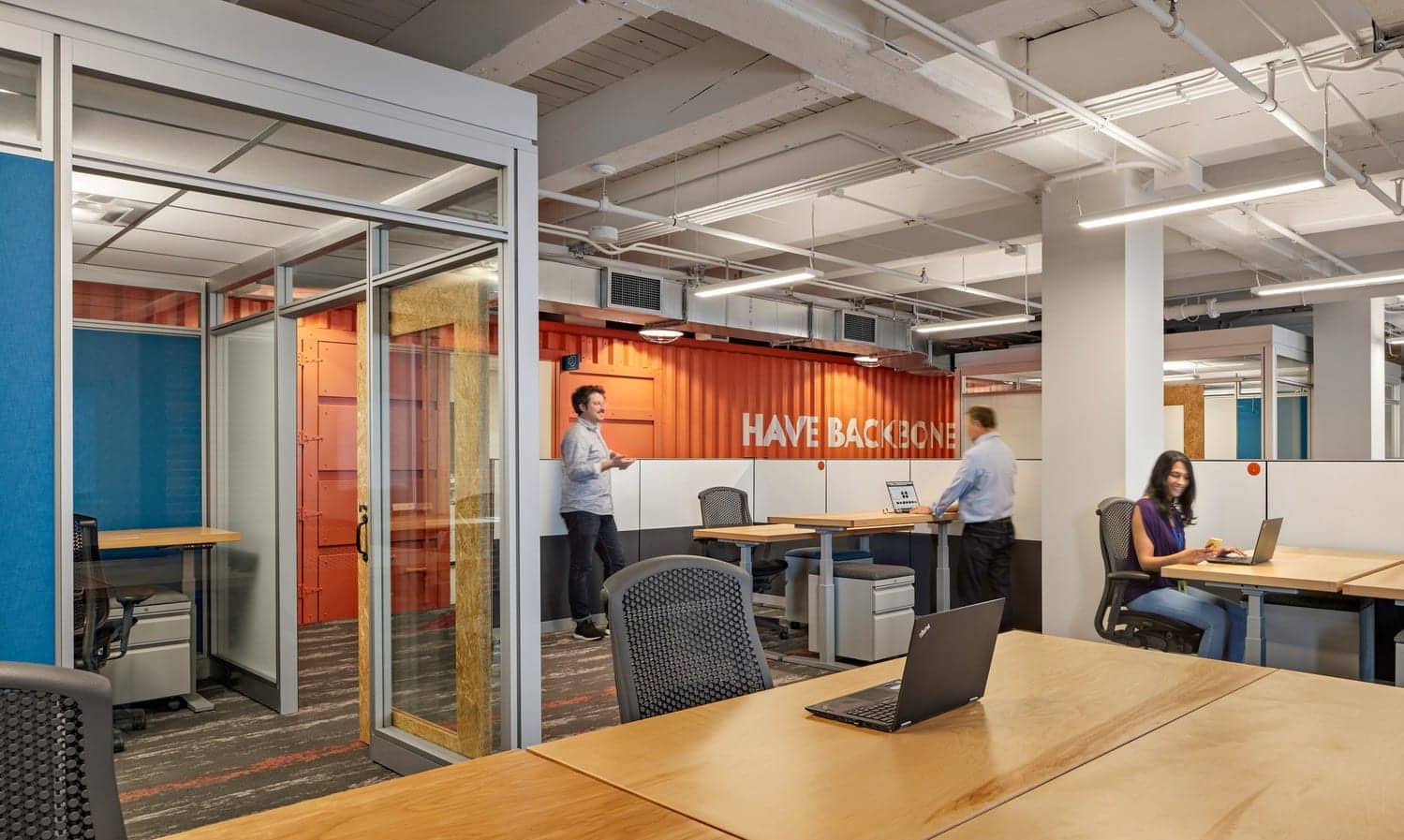By Arnold Levine | Director of Workplace Strategies | July 8, 2014

Confidential Client, Boston. Photography © Robert Benson.
What is an integrated approach, and why is it important? It is where a project team, including workplace design strategists, designers, and change management specialists, work together throughout the duration of a project. And by integrating the process, the team concurrently uncovers issues within the larger project context.
The strategic analysis of a client’s challenges and requirements has traditionally been executed as separate efforts from siloed departments with a hand-off at the end to a design team or client end user. IA takes a different approach that avoids potential information gaps by integrating the efforts of workplace strategies and design: The end result is a comprehensive and implementable analysis and recommendation package that moves into the design and change management processes together. This approach brings congruence to the best of both worlds by integrating the sensitivity of design and the analysis of business workflow.
Weaving workplace strategies throughout the entire design process, from the first meeting to long after occupancy, is essential to a project’s success and the hallmark of IA’s approach.
Organizational architecture and why it matters to design
A business entity’s organizational architecture is the linchpin and singular informer of an analysis process that allows IA to ultimately develop solutions that enhance organizational performance and business performance. It comprises several elements:
- Strategy: Where is the organization going and how does it intend to get there?
- Structure: Organizational and business unit structure as well as management style
- Work processes: Technology, focus work, collaborative work, social interaction, and learning
- People: Who does the organization wish to attract and how will they retain them?, and
- Reward: Why do employees come to work at a specific company?
IA’s integrated approach takes workplace design to a new level by using organizational architecture as a lens to focus on developing workplace design strategy scenarios as measurable business cases that can actually contribute to business success.

SapientNitro in Atlanta by IA Interior Architects. Photo by Eric Laignel.
Solving the right problem, not the wrong one
For design to truly enhance a business, it must go beyond simply looking good. We have seen many instances where office interiors are pristine and elegant—even award-winning—but that doesn’t necessarily mean that the design has solved the “right” problem. An integrated approach digs deep into an organization to identify the problem that actually needs to be solved. This elevates the effect of what we do from simply shaping the physical workplace to that of impacting the organization and its business performance. It also recognizes that the real benefit of successful workplace design strategy solutions is not limited to place making. IA’s integrated process enables strategy scenarios to identify underlying organizational areas that can positively benefit from those solutions and to reduce real estate costs.
A more adaptable change management program
All too often, organizations shy away from selecting the most beneficial strategy due to the unknowns of change and its organizational impact. By identifying change issues during the strategy development process, the team is made aware from the start of what needs to be addressed organizationally, and a change management program can be developed and implemented early in the process, instead of post occupancy. This results in a change program that is less abrupt, evolves during the course of the design development process, is less threatening to employees, and is implemented with adequate time so that employees are ready and embrace new ways of working rather than dreading the unknown.
Dollars and sense
Finally, an integrated approach has significant financial impact on the course of a project. If a team does not uncover all organizational issues at the outset, then changes down the road will impact cost. An integrated process allows the client to proceed with the knowledge that all significant issues affecting the design strategy and design solutions have been identified and will not need to be altered later in the cycle. Without this process, an organization risks changes that may occur during development of the design solution that cause increased fees. Even more concerning, is the possibility of changes during construction that could have an enormous financial impact on the project.
As the workplace evolves, so too must the process. Workplace design consultants also think like business consultants to create a design solution that helps a business successfully function, grow, innovate, and thrive. An integrated approach enables that effect for success.
Like What You See?
If you enjoyed this post, then you'll probably enjoy learning more about IA's approach to workplace strategy. Click below to read "Strategy in 2018: Here Comes GenZ!"
Trust the process - it's evolving just like the workplace.

